 |
New York
Architecture Images-Harlem and the Heights Morris-Jumel Mansion |
|
architect |
|
|
location |
Roger Morris Park 65 Jumel Terrace at 160th St. |
|
date |
1765 |
|
style |
Georgian Palladian |
|
construction |
wood |
|
type |
House |
|
|
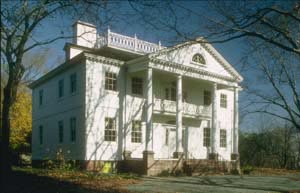 |
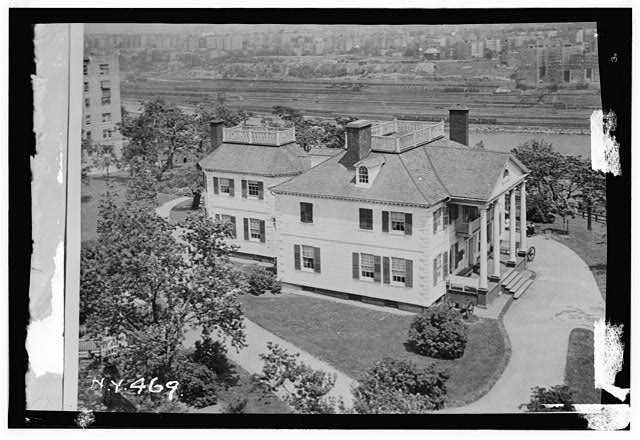 |
|
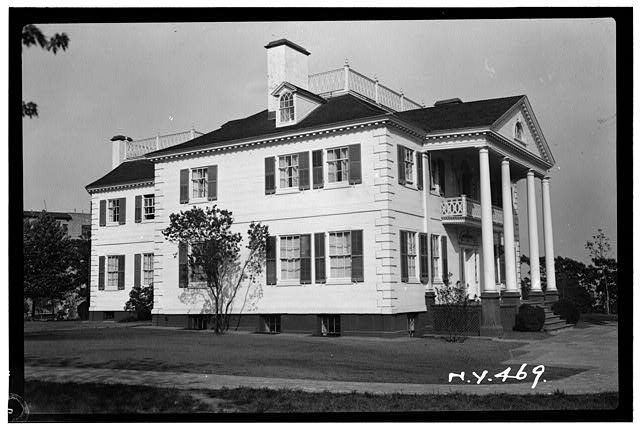 |
|
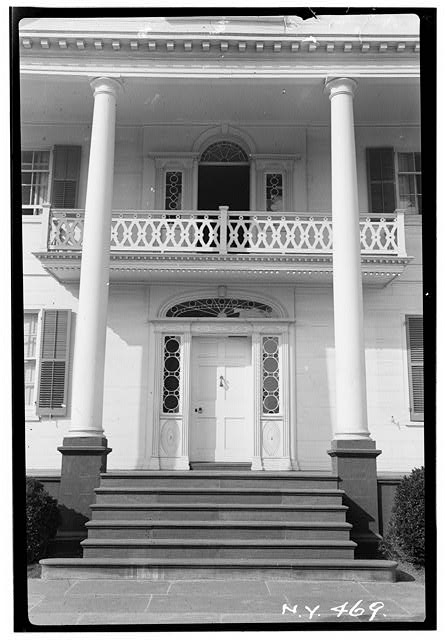 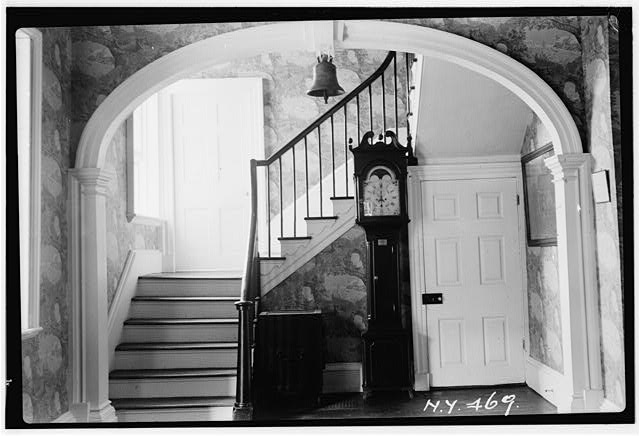 |
|
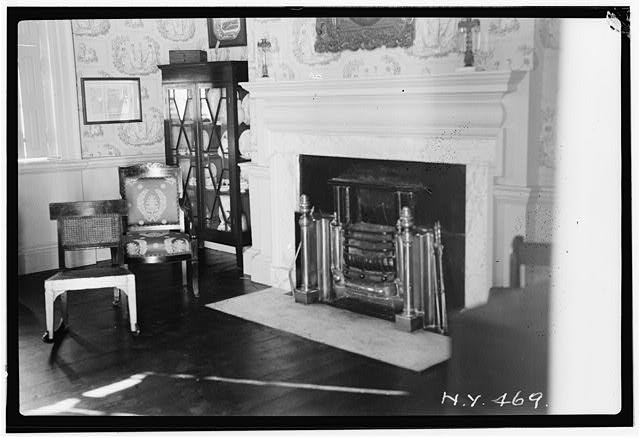 |
|
|
|
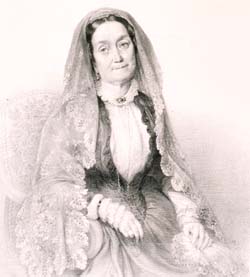 |
| Madame Eliza Jumel Lithograph by A. Collette, Lauree Feldman Graphics. Courtesy of the Morris Jumel Mansion |
|
|
notes |
George Washington Slept Here
A New Century
Architecture
|
|
|
The Morris-Jumel Mansion, dating from 1765, is
among the most important examples of Georgian architecture in the
nation. The building features rare early examples of a two-story
colonnaded portico and an octagonal wing. The wood facade is fashioned
to simulate stone construction. Colonel Roger Morris built the house as
his summer retreat and, with its prominent site overlooking the Harlem
River and Manhattan, the building briefly served as Washington's
headquarters during the Revolution. The property is now one of New
York's most important landmarks.
Although maintained as an historic site since 1903, the Morris-Jumel Mansion had not seen any major repairs in almost 30 years. The Pokorny firm conducted a complete conditions survey and prepared construction documents for exterior restoration. Extensive restoration included epoxy consolidation of deteriorated wooden structural members and detailed repairs of chimneys, porches, wooden portico columns, balustrades and other exterior elements. Craftsmen replicated the original windows using traditional mortise-and-tenon joinery and hand-blown glass. |
|
Manhattan’s oldest surviving house,
Morris-Jumel Mansion, is a monument to colonial grandeur. Built in 1765
as a summer retreat for British colonel Roger Morris and his American
wife Mary Philipse, this house is the only survivor of a number of
similar country houses built by wealthy New Yorkers. Morris, the nephew
of a successful English architect, was greatly influenced by the designs
of the 16th-century Italian architect Palladio. His sophisticated
residence includes a monumental portico and pediment, supported by grand
Tuscan columns, and a large, two-story octagonal addition at the rear,
one of the first of its kind in the country.
Before Harlem Heights developed into the vibrant community it is today, this site commanded views of lower Manhattan as well as of New Jersey and Westchester. With the outbreak of the Revolutionary War, Morris, a Loyalist, left for England. His home, which he called “Mount Morris,” was then occupied successively by George Washington, British Lieutenant General Sir Henry Clinton, and the Hessian commander Baron Wilhelm von Knyphausen. Washington’s use of this house as his temporary headquarters between September 14 and October 20, 1776, is well documented by his daily correspondence and official papers. After the war, the Morris’s property was confiscated and sold by the new American government. It became Calumet Hall, a popular tavern along the Albany Post Road. In 1810 Stephen and Eliza Jumel bought the property. Madame Jumel was from an impoverished Rhode Island family. Her marriage to Stephen Jumel, a wealthy French merchant who had made his fortune in the wine trade, gave her entry to New York’s highest social circles. The Jumels spent several years in France, where they made friends in the elite circle around Napoleon’s court. They returned to the United States in 1828 to settle in the mansion. Inspired by cutting-edge French fashion, Madame Jumel bought new furniture and redecorated her home in the elegant Empire style. One year after her husband’s death in 1832 from injuries sustained in a carriage accident, Madame Jumel married former Vice President Aaron Burr in the mansion’s front parlor. The marriage was not a success, and the couple formally divorced in 1836. The immensely wealthy Madame Jumel became increasingly eccentric as time passed, and lived in the mansion until her death in 1865. The city bought the house from later owners, the Earles, in 1903. With the assistance of the Daughters of the American Revolution, it opened as a public museum the next year. Today, Morris-Jumel Mansion and Roger Morris Park are part of the Jumel Terrace Historic District. The house features nine restored period rooms including George Washington’s office, a dining room glittering with 19th century ceramics and glass, and Eliza Jumel’s chamber, with a bed that she maintained had belonged to Napoleon. The third floor houses an archive and reference library. Morris-Jumel Mansion is operated by Morris-Jumel Mansion, Inc. and maintained by the Historic House Trust of New York City along with the City of New York/Parks & Recreation. The stately two-story Morris-Jumel mansion, built in 1765 in a Georgian style modified to suit a country setting, was purchased by Mr. and Mrs. Stephen Jumel in 1810. Though Stephen Jumel was a former Caribbean plantation owner and successful wine merchant, it was the colorful and controversial Madam Eliza Jumel who became the talk of New York City society. Eliza Jumel's life typified the limited options of ambitious young women born into poverty in late 18th-century America. Forced into prostitution early in life as a means of survival, Eliza's fortune turned after meeting and marrying Stephen Jumel in 1804. The prejudices of society against those with such a background forbade any acceptance of Mrs. Jumel. Wealth permitted travel, however, and the Jumels sailed to France in 1815. There, Eliza found social acceptance, mingling with aristocrats while adopting openly Bonapartist sympathies. Such convictions, voiced soon after Napoleon's exile, proved too controversial for the new French government, and in 1816 Louis XVIII ordered Mrs. Jumel to leave France. Eliza returned to the mansion, but her marriage was soon in decline over Stephen's discovery of her early life and the dwindling Jumel fortune. While Stephen remained in France, Eliza sold business holdings and kept the profits, pursuing social acceptance through wealth while leaving Stephen penniless and hastening his death. Fourteen months later Eliza, then 58, married 77 year-old, former Vice-President Aaron Burr. The marriage was marked by Burr's misuse of the Jumel fortune and the two were formally divorced on September 14, 1836, the day of Burr's death. Jumel spent the rest of her life in the mansion, dying here in 1865 at the age of 90.
|
|
| nyc-architecture.com | |
|
links |
www.morrisjumel.org |